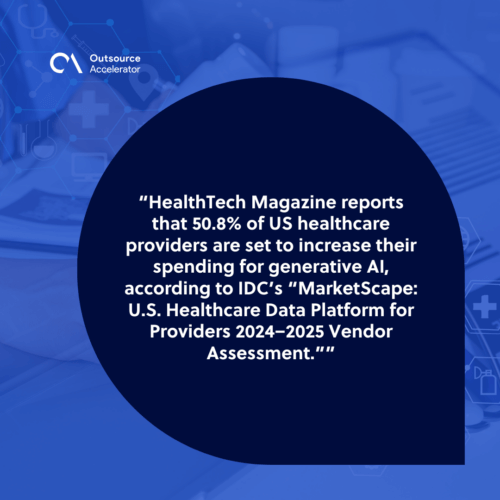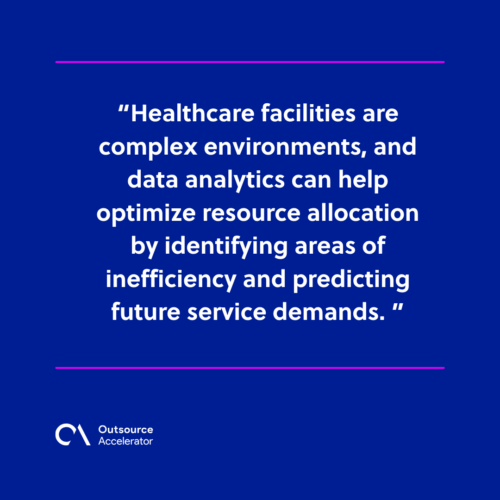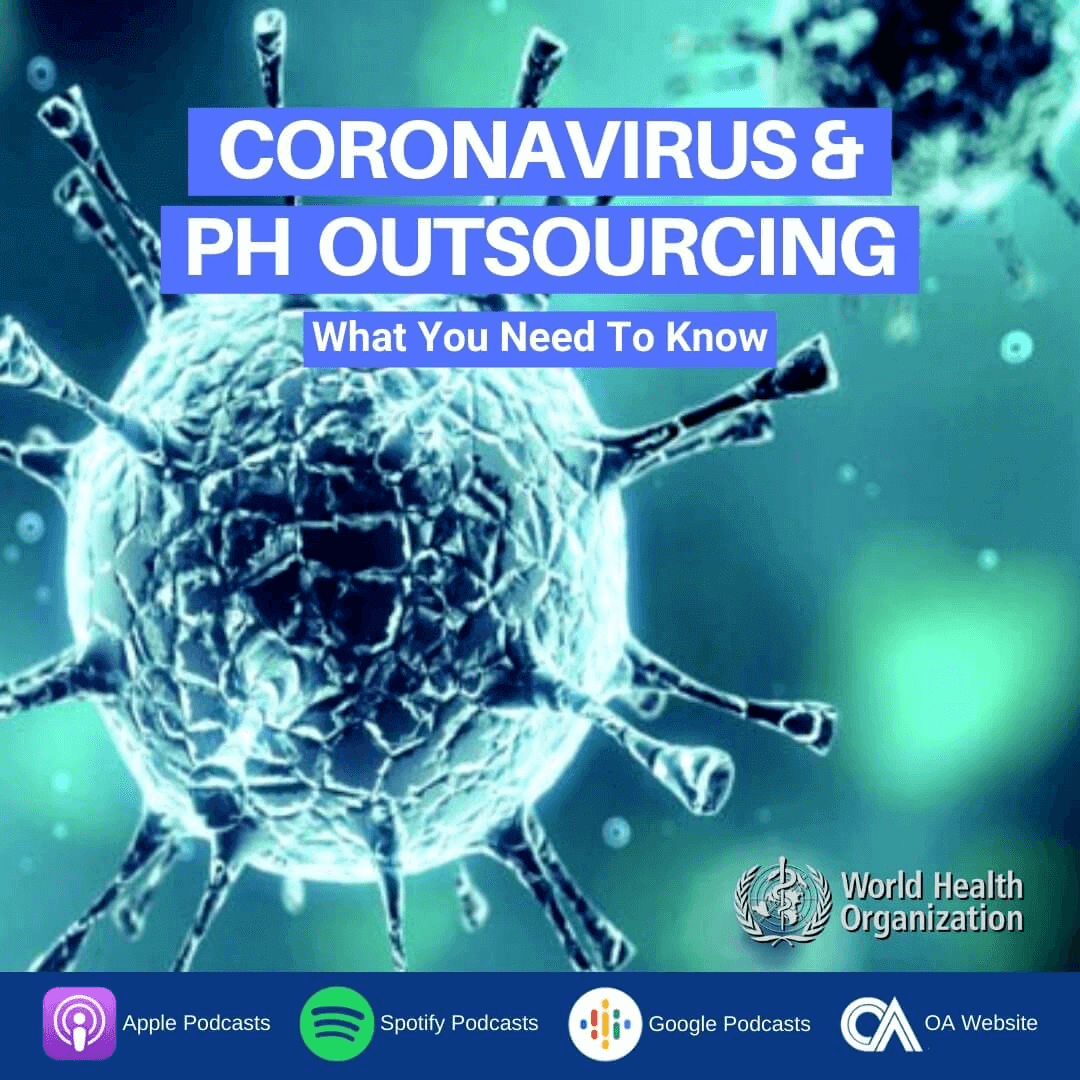Improving patient care with healthcare data analytics

The healthcare industry is undergoing a digital transformation, and at the heart of this revolution lies the power of healthcare data analytics.
By leveraging the vast amounts of data generated daily, healthcare providers can gain valuable insights, improve patient care, and drive operational efficiency.
Healthcare data analytics transforms raw data into actionable intelligence, enabling informed decisions that enhance patient outcomes and streamline healthcare delivery.
The importance of technological developments in the healthcare industry
Technological developments have become integral to the fabric of the healthcare industry.
Innovations such as electronic health records, AI-powered diagnostics, and wearable health devices have transformed the way providers deliver care.
Moreover, the implementation of interoperable systems and data analytics solutions has facilitated seamless data exchange between healthcare providers. This has enabled holistic care coordination and promoted a patient-centric approach to healthcare delivery.
Many providers are already preparing to adapt. HealthTech Magazine reports that 50.8% of US healthcare providers are set to increase their spending for generative AI, according to IDC’s “MarketScape: U.S. Healthcare Data Platform for Providers 2024–2025 Vendor Assessment.”
By embracing technological innovations, healthcare providers can leverage data-driven insights to drive even greater improvements in patient outcomes.

Types of healthcare data analytics
Healthcare data analytics is divided into five key types, each serving a unique purpose in improving patient care and operations.
1. Descriptive analytics looks at past data to identify trends and patterns. It helps healthcare providers understand what has happened, such as tracking disease outbreaks or hospital readmission rates.
2. Diagnostic analytics goes a step further by analyzing historical data to determine the root causes of health issues. For example, it can help identify factors leading to high patient mortality rates.
3. Predictive analytics uses data modeling and machine learning to forecast future health events. It can predict disease risks, allowing for early intervention and better patient management.
4. Prescriptive analytics suggests the best course of action based on available data. It helps doctors make data-driven treatment decisions and optimize hospital workflows.
5. Cognitive analytics mimics human thought processes using AI and natural language processing. It improves diagnostics, automates medical coding, and enhances decision-making with deep data insights.
5 Key ways healthcare data analytics improves patient care
Here’s how healthcare data analytics is making a real difference in patient care:
1. Personalized medicine
Think of it as having your own health blueprint. By diving into patient-specific data, like genetic information and medical history, healthcare providers can craft treatment plans that are uniquely suited to individual needs.
This means more effective treatments and better outcomes, as it acknowledges that everyone’s health journey is different. Healthcare data analytics allows for a deeper understanding of how each patient responds to various treatments, leading to more precise and targeted therapies.
2. Proactive disease management
Imagine being able to see potential health issues before they fully develop. Healthcare data analytics makes this possible by identifying patients who are at a higher risk of chronic conditions.
Through predictive modeling, healthcare providers can step in with preventive measures and early interventions. This reduces the burden of chronic diseases and improves overall quality of life.
For example, if data shows a patient is at risk for diabetes, doctors can intervene with personalized diet and exercise plans before it becomes a bigger issue.
3. Enhanced clinical decision support
While clinicians possess extensive knowledge, they can’t retain every detail. Healthcare data analytics acts as a real-time assistant, providing access to relevant patient information and evidence-based guidelines right at the point of care.
New technologies allow us to actually make use of the vast amount of healthcare data, of which the World Economic Forum cites 97% as unused.
Clinical decision support systems are able to:
- Alert clinicians to potential drug interactions
- Suggest appropriate diagnostic tests
- Offer treatment recommendations
Error risk is decreased, and overall care quality is improved.
4. Optimized resource allocation
Healthcare facilities are complex environments, and data analytics can help optimize resource allocation by identifying areas of inefficiency and predicting future service demands.
By analyzing patient flow, staffing levels, and resource utilization, healthcare providers can make data-driven decisions to improve operational efficiency and reduce costs.
This ensures that resources are used effectively, leading to improved patient access and reduced wait times.

5. Enhanced patient engagement
Through patient portals and mobile health applications, healthcare data analytics empowers individuals to take a more active role in their health.
Providing access to personal health data, educational resources, and communication tools enables patients to become more informed and engaged in their care. This also elevates the level of trust they have in your methods.
This leads to improved adherence to treatment plans and better health outcomes. It’s about giving patients the tools and information they need to be partners in their healthcare.
Overcoming challenges in implementing healthcare data analytics
Implementing healthcare data analytics comes with its fair share of challenges. One of the biggest concerns is keeping patient data private and secure—after all, sensitive health information needs to be protected at all costs.
Another major hurdle is interoperability. With so many different systems and data formats in use, sharing and analyzing information across platforms isn’t always seamless.
On top of that, there’s a growing need for professionals who not only understand data analytics but also have a strong grasp of healthcare—something that’s not easy to find.
Addressing these challenges requires teamwork from healthcare providers, tech companies, and policymakers. They must create strong data security policies, establish industry-wide standards for data sharing, and invest in training programs to equip workers with the skills they need.







 Independent
Independent




